
Annual Forbs Around Las Vegas, Vegetation Around Las Vegas
 Barbedwire Russian Thistle (light) and Prickly Russian Thistle (dark) |
General: Prickly Russian Thistle (Salsola tragus) is an invasive weed that does well on higher-elevation disturbed soils. When dried out and rolling across the ground on a windy day, everyone recognizes tumbleweeds. When green, the plant grows long, upward and outward stretching stems that curl up into a large ball or basket (3 to 4 ft diameter) as they dry out. The main stem breaks free from the root when the seeds are ripe, allowing the plant to blow across the landscape spreading seeds. The non-native species does poorly in competition with native species on undisturbed soils. Prickly Russian Thistle is recognized by "soft" spines when young, reddish stems, and reddish "flowers." In this case, soft means they can be handled carefully without gloves. The shape of the plants at immature stages is taller than wide and narrowed toward the top. The overall color of the plant is dark green (blue-green). The stems are “soft” to the touch with longitudinal reddish stripes. The leaves are “soft” to the touch and slender. The fruiting calyx-bracts are small and red. Compare with Barbedwire Russian Thistle., which is a much more prickly plant. Prickly Russian Thistle is a common component of vegetation communities on disturbed soils throughout higher-elevation areas in the Upper Sonoran (Pinyon-Juniper Woodland), Transition (Yellow Pine Forest), and Canadian (Pine-Fir Forest) life zones to about 8,500 feet elevation. |
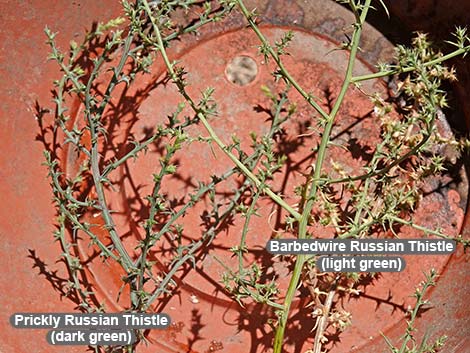 Barbedwire Russian Thistle (light) and Prickly Russian Thistle (dark) |
Family: Goosefoot (Chenopodiaceae). Other Names: Tumbleweed. Plant Form: Annual forb that grows long, outward stretching stems that curl up into a large ball or basket (3 to 4 ft diameter) as they dry out. Height: About 3 to 4 ft. Stems: Main stem at base to about 1/2-inch diameter. Branches many, thin. Stem green with red or purple stripes when young, aging to yellowish. Stem breaks free when seeds are ripe. No prickles on the stems. Leaves: Blades 1/3 to 4 inches, thread-like, becoming sharp pointed. Flowers: Blooms summer through fall. Flower inconspicuous, in leaf axils; look like saucers. |
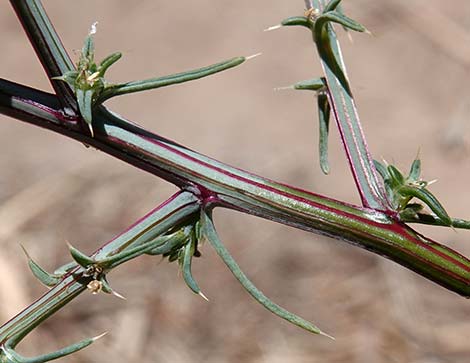 Red stripes on stems |
Seeds: Hard and well protected by 3 stout spines. The main stem breaks when seeds are ripe and the dried stems are curled into a loose ball; wind-blown balls spread seeds across the landscape. Habitat: Dry, well-drained sandy, gravelly, and rocky soils on upper bajadas and moderate slopes in the mountains, especially on sandy soils derived from volcanic rocks. Elevation: In southern Nevada, Prickly Russian Thistle occurs at elevations above 4,000 ft. Above 6,000 ft, this should be the only species present. Distribution: Widespread throughout North America; native to Eurasia. Comments: Called tumbleweeds because the mature plants blow on the wind to disperse seeds. A similar species, Barbedwire Russian Thistle also occurs around Las Vegas. This species is prickly from the start (seedlings prickly) and lack red on the stems. See Beatley, J. C. (1973). Russian-thistle (Salsola) species in western United States. Journal of Range Management, 26(3), 225-226, for a good discussion of Russian-thistles in southern Nevada, or snatch a copy here (PDF). |
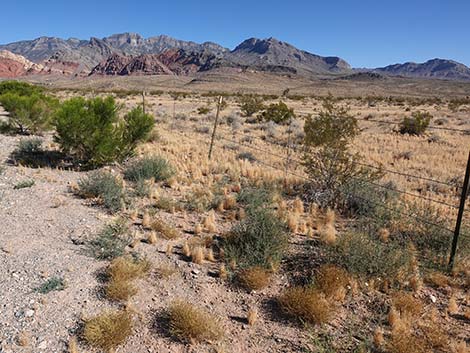 |
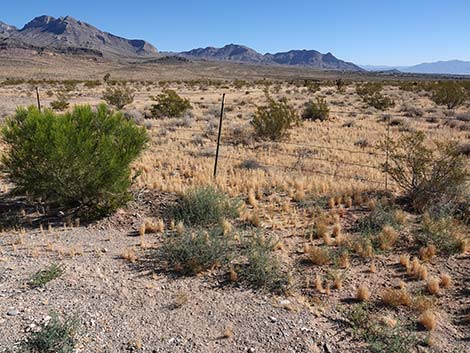 |
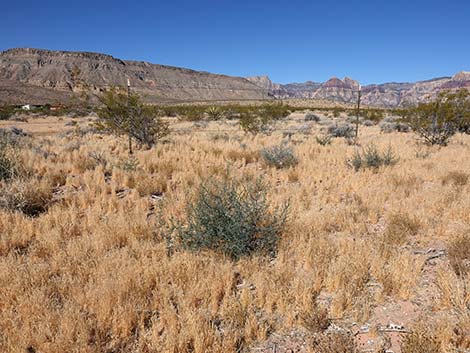 |
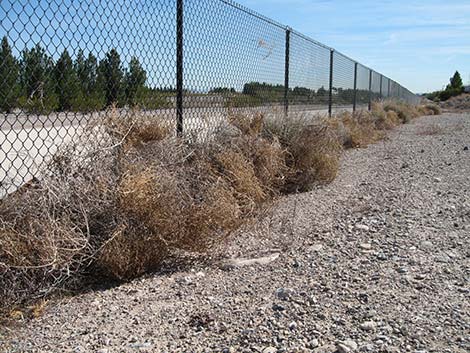 |
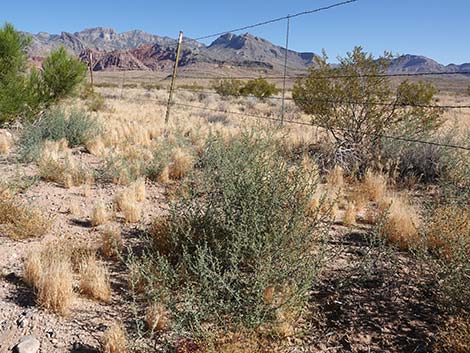 |
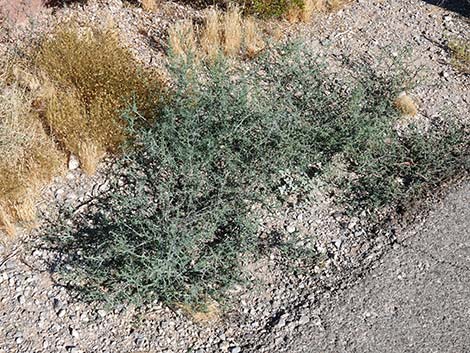 |
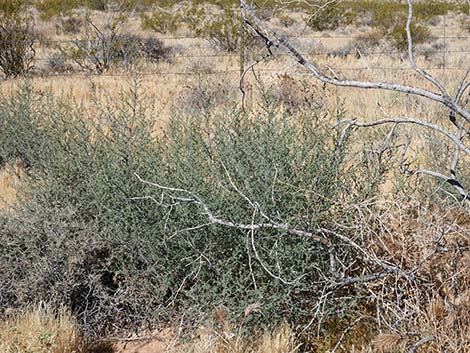 Prickly Russian Thistle, a fairly upright plants |
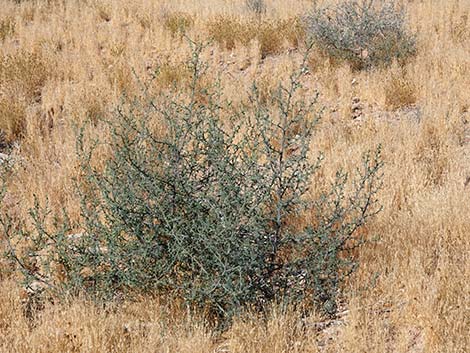 Prickly Russian Thistle, a fairly upright plant |
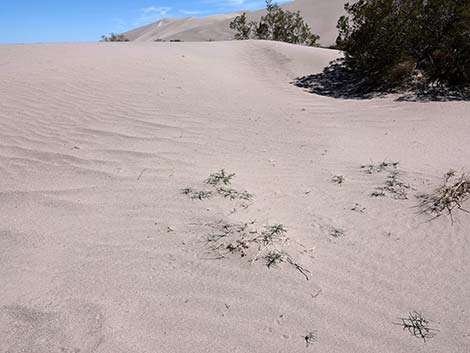 Prickly Russian Thistle seedlings in sandy habitat |
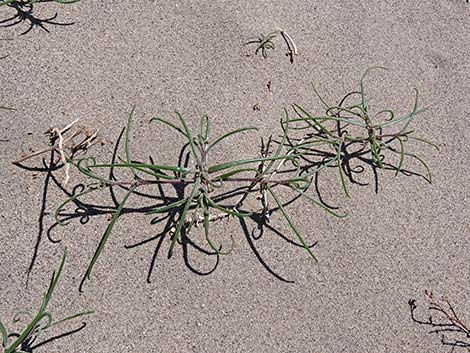 Seedling stems growing upright (stems not arranged as an X) |
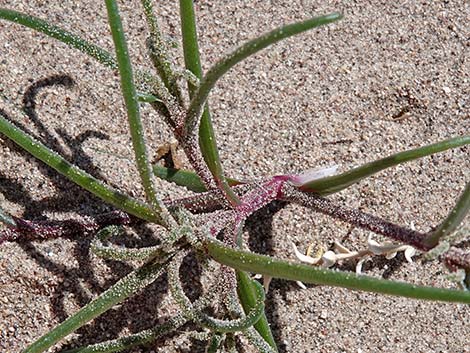 Seedling with long leaves and red stem |
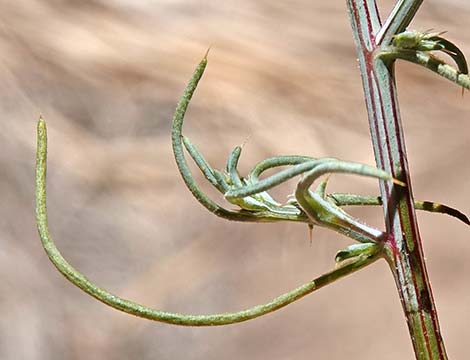 Leaves long and thin, relatively lax |
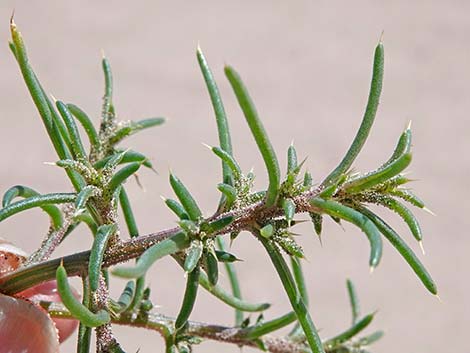 Leaves thin and cylindrical, spines not too prickly |
 Leaf blades 1/3 to 4 inches, thread-like, becoming sharp pointed |
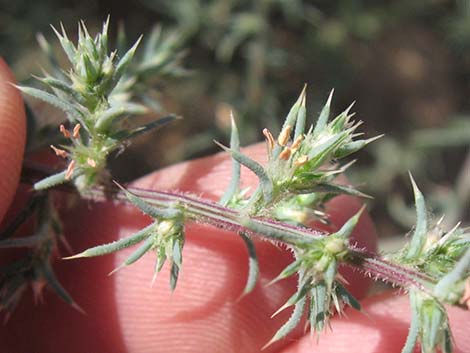 Reddish stems and fresh male flowers (note stamens) |
 Reddish stems and fresh male flowers (note stamens) |
 Reddish stems and fresh male flowers (note stamens) |
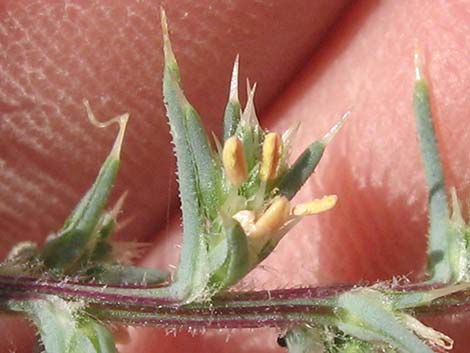 Reddish stems and fresh male flowers (note stamens) |
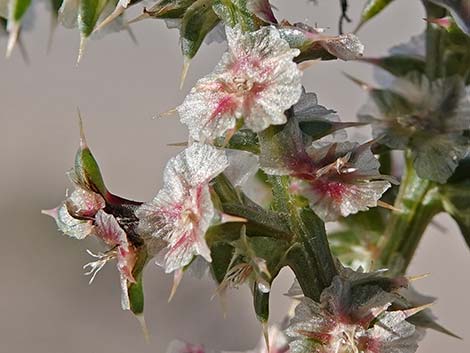 Female flowers with developing seeds usually reddish |
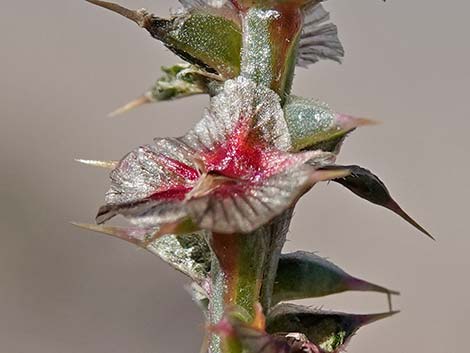 Female flowers with developing seeds usually reddish |
 Female flowers with developing seeds usually reddish |
 Female flowers with developing seeds sometimes not reddish |
 |
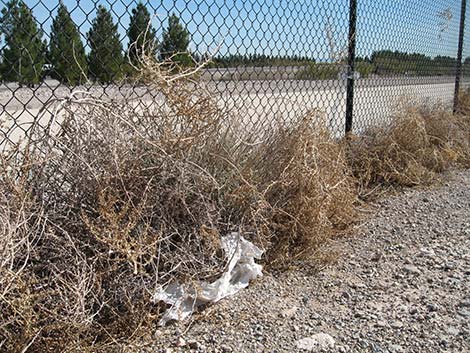 |
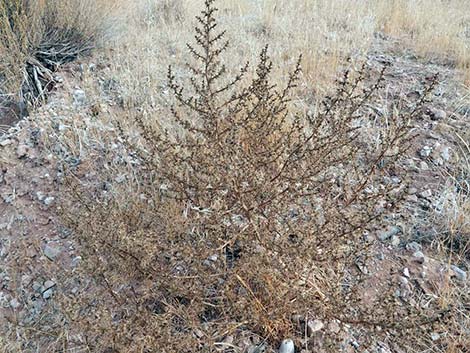 |
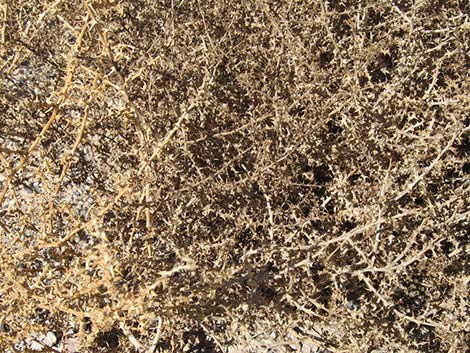 |
Note: All distances, elevations, and other facts are approximate. Names generally follow the USDA database.
![]() ; Last updated 241202
; Last updated 241202
| All Annual Forbs | Plant Species Index | Glossary | Copyright, Conditions, Disclaimer | Home |